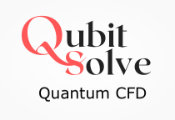Scientists Uncover Magnetic-Field Control of Ultrafast Spin Dynamics in 2D Ferromagnets
June 10 2025 -- A research team led by Prof. SHENG Zhigao from the High Magnetic Field Laboratory, the Hefei Institutes of Physical Science of the Chinese Academy of Sciences, in collaboration with Prof. A.V. Kimel from Radboud University, has demonstrated that strong magnetic fields can effectively regulate laser-induced ultrafast demagnetization in a two-dimensional van der Waals (vdW) ferromagnet.
The findings were published online in National Science Review.
Suppressing slow processes could boost spin-based data processing to femtosecond speeds, potentially revolutionizing information technology. Therefore, understanding and controlling ultrafast demagnetization remains a key focus in spintronics. Compared to other external fields, magnetic fields directly act on spin angular momentum, making them effective for spin control. However, most studies have used fields below 1 T, and the regulatory role of magnetic fields has been largely overlooked, with limited systematic research on their effects and mechanisms in ultrafast demagnetization.
In this study, using the Steady High Magnetic Field Experimental Facility and time-resolved magneto-optical Kerr effect spectroscopy, the researchers investigated the dynamic spin behavior in Fe₃GeTe₂, a vdW ferromagnet known for its layered structure and spintronic potential.
Their findings revealed that a 7-tesla magnetic field could accelerate the demagnetization process by 60% while simultaneously suppressing demagnetization efficiency by 34%. This dual effect had not been observed in previous studies, which typically used magnetic fields below 1 T and focused primarily on the influence of laser parameters or material properties.
To explain the phenomenon, the team conducted temperature-dependent measurements and proposed a regulatory mechanism based on spin entropy changes, within the framework of the three-temperature model. Unlike mechanisms tied to specific material characteristics, this model offers a universal explanation, suggesting that magnetic-field-driven ultrafast demagnetization could be a widespread effect in other magnetic materials.
Interestingly, the regulatory effects were more pronounced at elevated temperatures (~200 K), highlighting the potential for real-world applications in high-speed magnetic storage and logic devices operating at or near room temperature.
The work was funded by the National Key R&D Program, National Natural Science Foundation of China, European Research Council Fund, and High Magnetic Field Laboratory of Anhui Province.




































